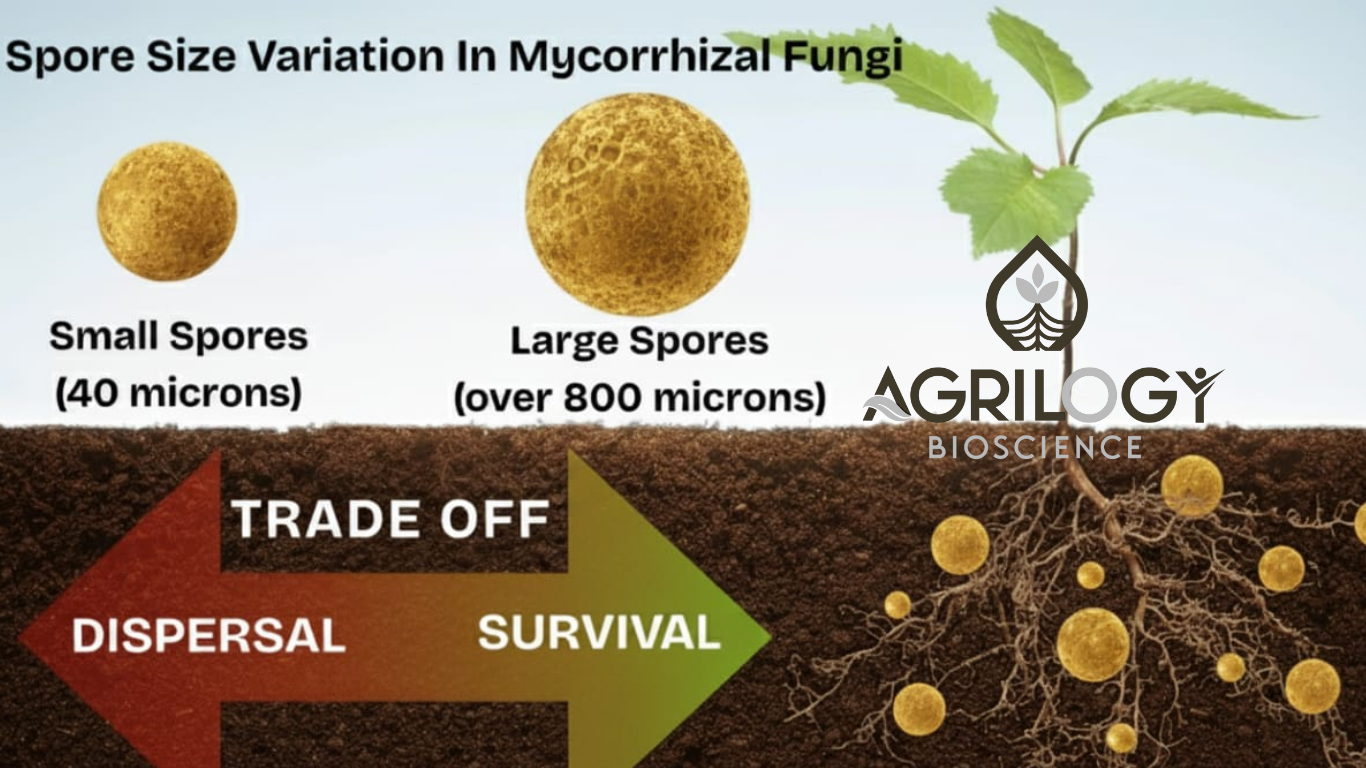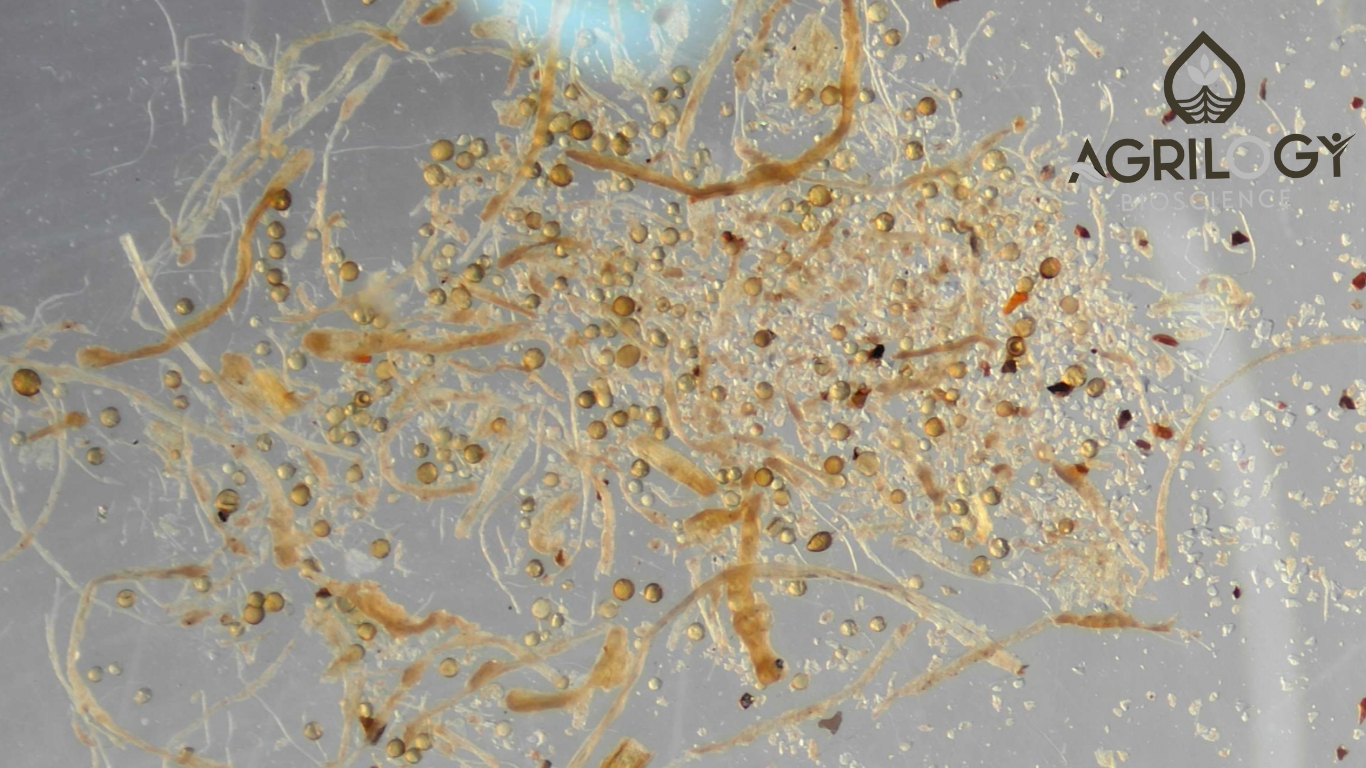
- Home
- sustainable agriculture
Transform Your Garden into a Personal Paradise!
Why Spore Size Matters in Mycorrhizal Fungi ?
The hidden trade-off between survival, dispersal, and ecosystem success
The Basics: What Are We Talking About?
Endomycorrhiza (AMF): These are fungi from the phylum Glomeromycota that live in partnership with the roots of over 80% of land plants.
The Spore: For AMF, spores are the primary survival and dispersal unit. Each spore is a tiny capsule packed with hundreds to thousands of nuclei, lipid reserves, and the potential to start life again by colonizing a p
lant root when conditions allow.
Why Spore Size Matters
Spore size is not random. It’s an evolutionary trade-off between two competing needs:
- Small spores → High numbers, easy dispersal.
- Large spores → Better survival, more reserves.
This balance explains why AMF are so successful in almost every terrestrial ecosystem.
Genetic Blueprint: Different Families, Different Sizes
Each AMF species has a “signature” spore size.
- Acaulospora and Entrophospora → Small to medium spores (40–200 µm).
- Gigaspora and Scutellospora → Giants (300–800 µm, sometimes visible to the naked eye).
The Survival vs. Dispersal Trade-Off
- Large spores
- Pros: Store more food, survive drought or poor soils, grow long germ tubes.
- Cons: Costly to make, fewer in number, poor wind dispersal.
- Small spores
- Pros: Cheap to produce, countless in number, move easily with water, wind, or animals.
- Cons: Less energy stored, short shelf life, need to land very close to a host plant root.
Environmental Drivers
- Nutrient-poor soils: Favor larger spores for survival.
- Disturbed ecosystems (e.g., farms): Favor smaller spores for rapid recolonization.
- Host plant health: Stressed plants may force fungi to produce fewer/smaller spores.
Ecological and Practical Implications
Soil Health Indicator
Shifts in spore size reflect ecosystem status.
- Dominance of small spores → disturbance, intensification, or degradation.
- Large spores → stability, maturity, and resilience.
Agricultural Inoculants
- Small spores: Best for commercial use. They can be mass-produced, flow in irrigation systems, and mix with seed coatings.
- Large spores: Less equipment-friendly but ideal for forestry, orchards, or revegetation projects needing long-term establishment.
Dispersal Across Landscapes
- Small spores: Travel vast distances via wind and water (even between continents).
- Large spores: Spread locally, often hitchhiking with earthworms, rodents, or other soil movers.

Fascinating Twist: Spore Clusters
Some AMF species combine both strategies by producing spore clusters (sporocarps).
- Example: Glomus species form clusters of many small/medium spores.
- Advantage: Protection plus the ability to disperse multiple spores at once via animals or disturbance.
The Bigger Picture: r- vs K-Strategies
In ecological terms:
- Large spores = K-selected strategy → “quality over quantity.”
- Small spores = r-selected strategy → “quantity over quality.”
This simple size difference drives the resilience and spread of one of Earth’s most important plant-fungal partnerships.
The Bottom Line
Spore size is not just a microscopic detail—it’s a survival strategy. It shapes how fungi spread, endure harsh conditions, and support the plants we rely on for food, forests, and healthy ecosystems.

